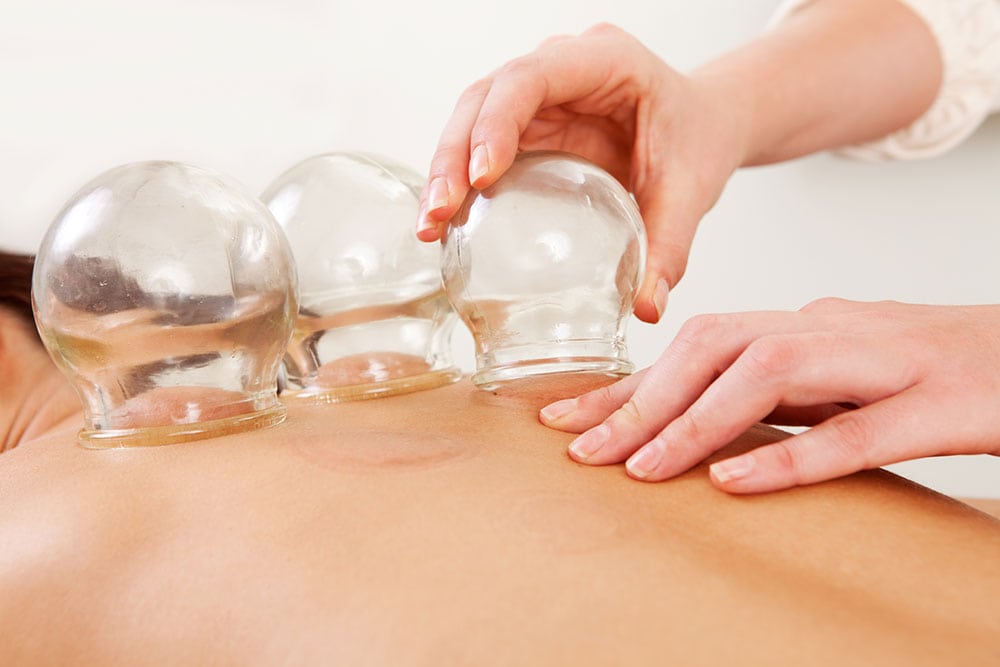Cupping: how an ancient therapy helps give modern athletes an edge

When Michael Phelps swam to Olympic gold, his body covered in red circles, he re-ignited interest in the ancient Chinese art of cupping. Phelps wasn’t the only athlete to sport the tell-tale bruise like marks – members of the US gymnastics team also used cupping to cope with muscle fatigue and soreness.
But what exactly is cupping and why it is so popular with athletes?
The practice of cupping has been popular in traditional Chinese medicine for thousands of years. The traditional practice involved placing flammable materials in a vessel and igniting them, then placing the vessel on the skin where a natural vacuum forms as the air cools. This process causes the skin to be sucked into the cup, reddening as the blood vessels expand to cause the now familiar red rings. It’s that expansion of the blood vessels that makes the therapy so effective for promoting blood flow, its adherents claim.
More modern methods of cupping use a pump to create the vacuum and may involve silicon cups that can be moved over the skin’s surface for a massaging effect.
Whichever method a therapist chooses to use, the effects are the same – cupping may help to reduce pain, promote relaxation and skin health including the appearance of cellulite, and help to fight respiratory infections. In the case of an elite athlete like Phelps, cupping is used to promote fascial lubrication – the fascia lie between and around the muscles – to increase freedom of movement. Instead of pressing the fascia into the muscles, as happens with traditional pressure massage, the fascia are lifted away from the muscles, allowing fluid to flow around them more easily.
It certainly seemed to work for Phelps, who became the most decorated athlete ever at Rio.
If an elite athlete like Phelps is using cupping to such obvious performance enhancing effect, the thinking goes, it’s a therapy that may be worth trying. And whilst some of the claims made for its efficacy remain unproven, with no harmful side effects cupping may prove a valuable therapy for easing those aching muscles.
To find a therapist of Cupping or Traditional Chinese Medicine visit the directory

